Eiko Otake—A Body in Tokyo + A Body in Fukushima
A Body in Tokyo (30min)
A Body in Fukushima (60min)
Interview(30min)
English subtitles: Mai Honda, Eiko Otake
About Eiko Otake
Eiko Otake met her partner Koma at Tatsumi Hijikata’s studio in 1971 when she was a university student. The two of them moved to Europe the following year and studied with Manja Chmiel in Germany and performed all over Europe. After returning to Japan they studied with Kazuo Ohno, before moving to New York in 1976.
The performance duo Eiko & Koma collaborate on everything from choreography, direction, costumes and set to performance, and have presented their works at theatres, universities, museums and festivals in many countries, primarily in the United States.
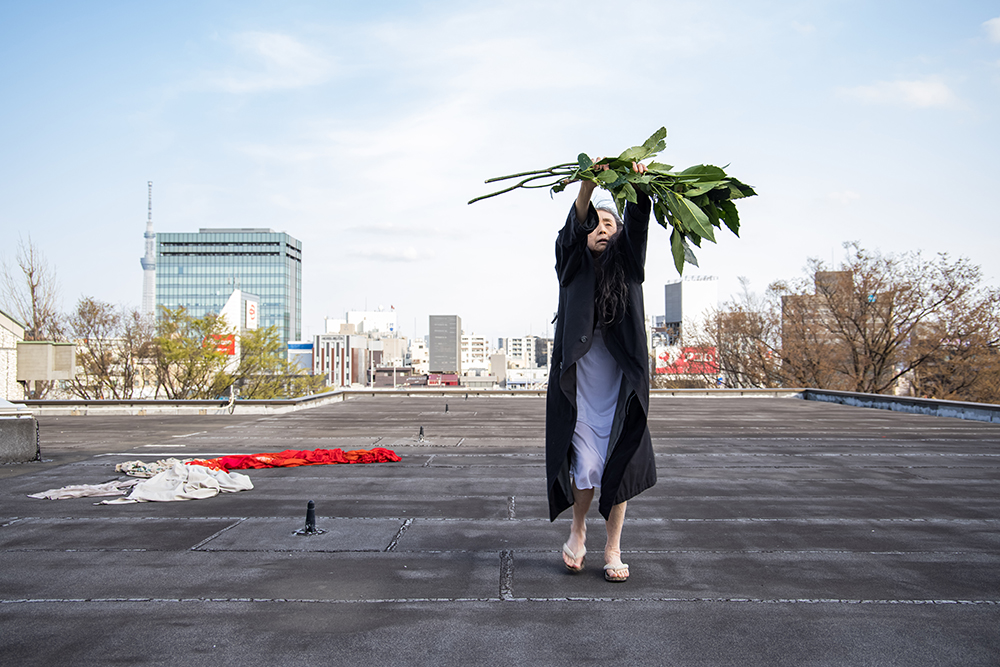
photo by Tatsuhiko Nakagawa
They have worked on many unusual pieces, such as dancing in a river and creating an installation in a caravan. They have been awarded the MacArthur Fellowing (1996–2001) and the American Dance Festival Award (2004). In 2011, the Walker Art Center published a book compiling their works Eiko & Koma: Time Is Not Even, Space Is Not Empty in conjunction with a retrospective exhibition that was held in various parts of the United States.
In 2014, Otake began a solo career. She has created three new works for TOKYO REAL UNDERGROUND, as part of her ongoing solo project A Body in Places.
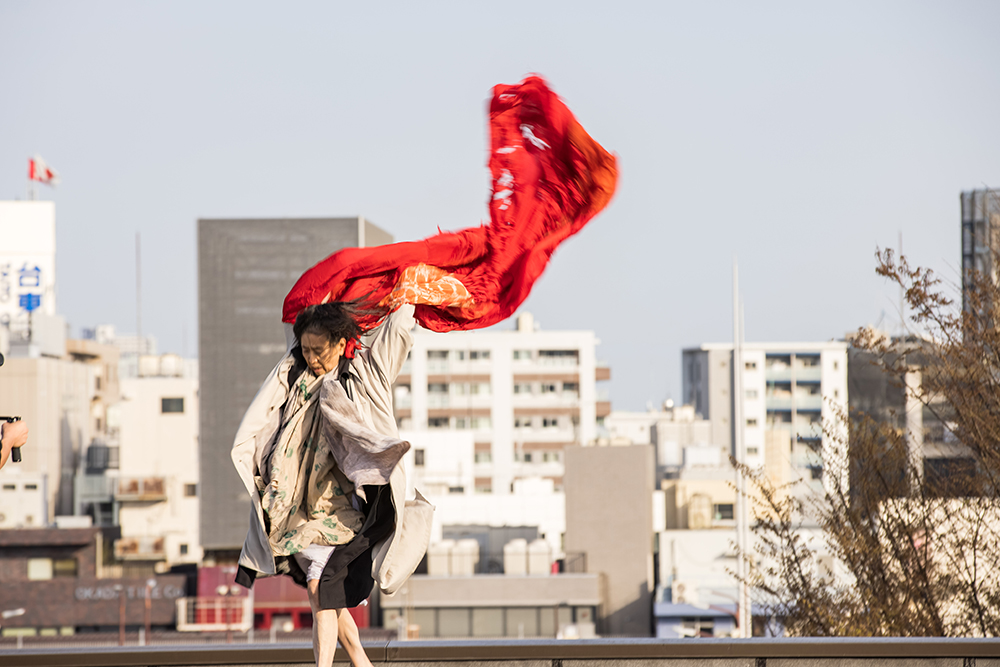
photo by Tatsuhiko Nakagawa
About A Body in Places
What experiences and thoughts do the history and reality of a place bring to the minds of a performer and viewer? What do their bodies leave in that place? A Body in Places is a project in which Otake places herself in spaces other than a traditional theatre and explores the possibilities of physical expression as she interacts with the place.
In the summer of 2011, while on a temporary visit back to Japan, Otake visited Fukushima after the meltdown with a high school friend. In 2014 she returned to Fukushima, this time with historian and photographer William Johnston, who took photographs as she performed at various sites with no audience.
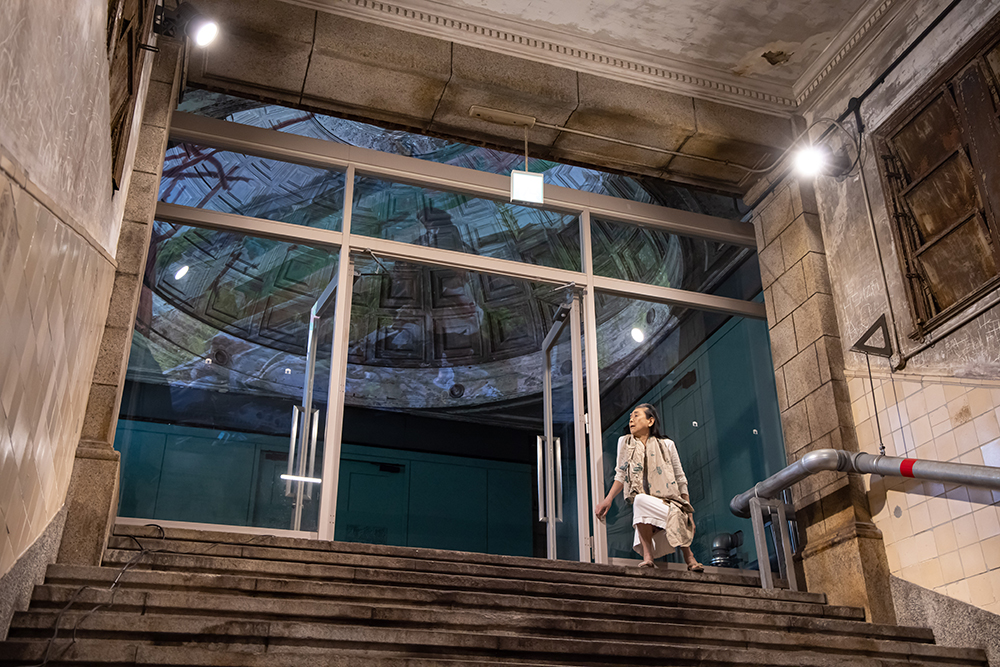
photo by Tatsuhiko Nakagawa
The large number of photographs taken became the basis for many variations of this project, including photography exhibitions at stations, churches and museums, as well as a film edited together by Otake, which she uses in her performance. She has performed this work in many places, including boutiques, restaurants and on the streets, questioning the distance between artists and audience, and their respective Fukushima.
Collaborator William Johnston is a professor at Wesleyan University and specialises in the history of disease and medicine in Japan. He has taught classes on the atomic bomb and nuclear power generation with Otake, and is also a Buddhist and photographer who is fluent in Japanese.
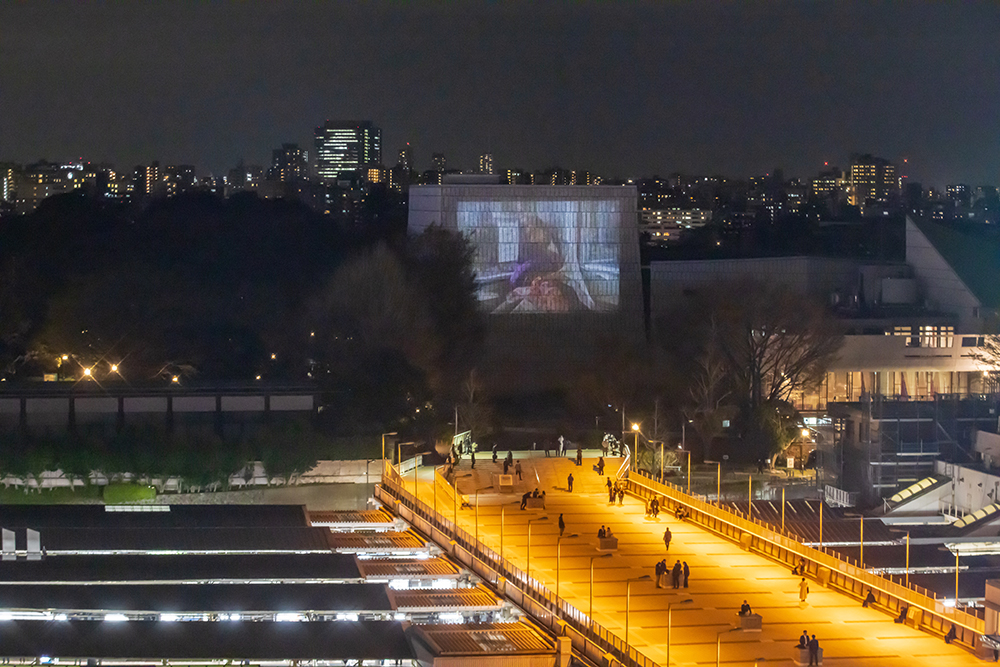
photo by Tatsuhiko Nakagawa
A Body in Tokyo
About A Body in Tokyo
A Body in Tokyo is the first time Otake’s solo project A Body in Places has been presented in Japan. 10 years after the Great East Japan Earthquake in March 2021, Otake places herself, moving and standing, in the streets and underground spaces of Tokyo. This 35 minute film follows Otake as images of Fukushima are projected onto her clothes and the surrounding buildings, layering images of her body.
It is filmed in multiple locations around Ueno, Ueno Station, which was once the end of the Joban and Tohoku train lines which run to Fukushima, Nakacho shopping street, which has had a long history since the Edo period, and the Tokyo Bunka Kaikan which is connected to museums and art galleries.
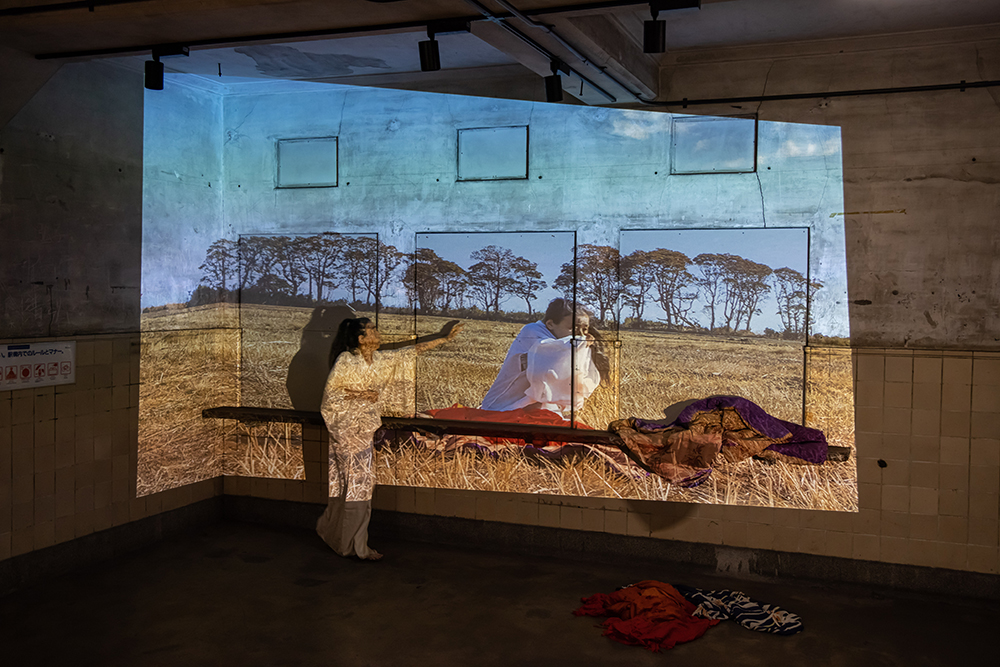
photo by Tatsuhiko Nakagawa
For Otake, Ueno is a place full of memories, of being scared of wounded veterans as a child, of the place she first encountered photographs of Nijinsky and German expressionist dance as a student in the library at Bunka Kaikan, and the place she decided to leave Japan.
The Former Hakubutsukan Dobutsuen Station [Museum Zoo Station] and Shibuya River culvert were chosen for being underground spaces—part of the concept for this festival. A Body in Tokyo is followed by an interview with the TRU Artistic Director, Takao Kawaguchi.
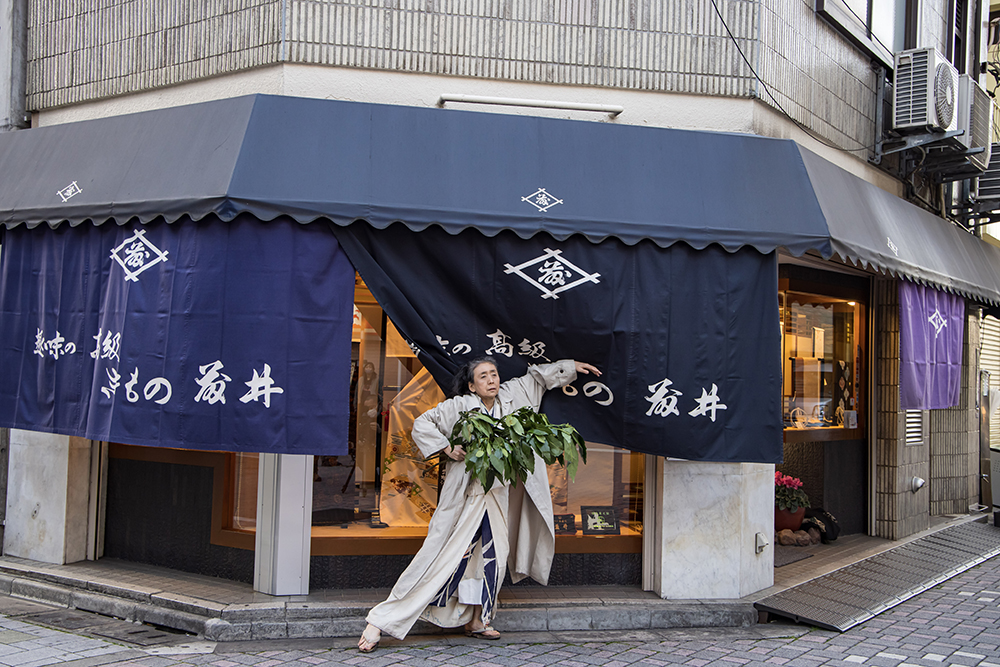
photo by Tatsuhiko Nakagawa
A Body in Fukushima
About A Body in Fukushima
Eiko Otake visited Fukushima with William Johnston in January and July 2014, August 2016, June 2017 and December 2019. A video work edited by Otake, A Body in Fukushima is a compilation of selected photographs from over 25,000 taken in numerous places around Fukushima and from past exhibitions. Narrated by Otake, along with the year, location, and distance from the Fukushima Daiichi Nuclear Power Plant shown on the Fukushima photographs, the video speaks of the changes in the landscape and seasons in Fukushima since 2014 as reconstruction work continues.
It is an attempt to place herself in Fukushima and remember what happened there, and to change the sense of distance between the viewer and Fukushima. Also included are scenes from photography exhibitions in Santiago, Chile, and at St. Mark’s Church in New York in 2016, and footage from a full-day solo dance performed with the Fukushima video at the Metropolitan Museum of Art in 2017, giving a sense of the A Body in Fukushima project to date.
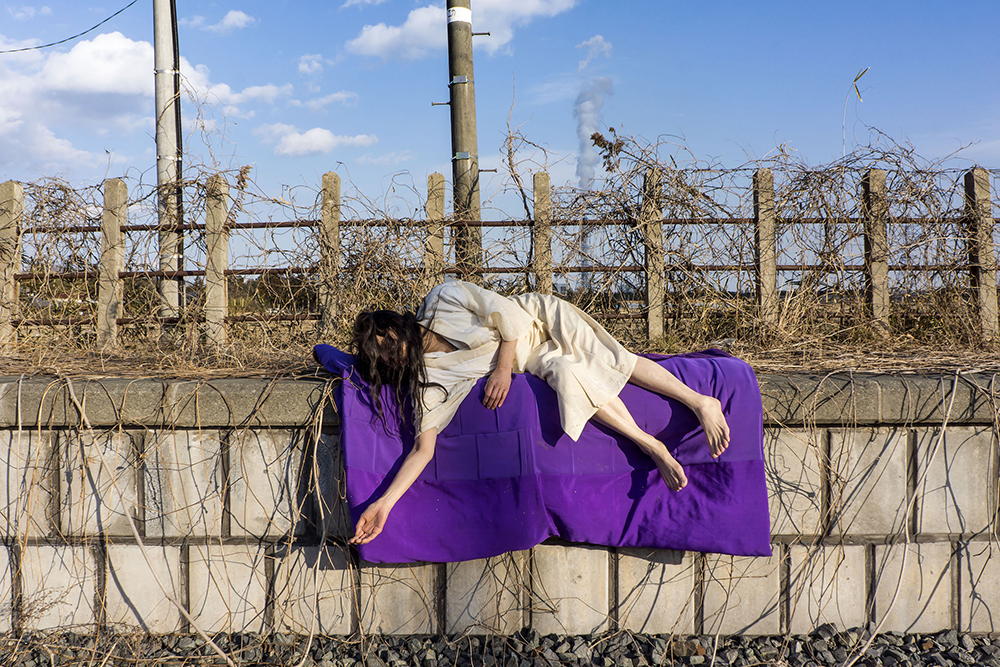
photo by William Johnston
Artist
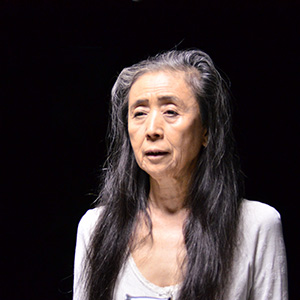
Eiko Otake
After studying with Tatsumi Hijikata and Kazuo Ohno in Japan in the 1970s, Eiko Otake studied with Manja Chmiel in Germany and Lucas Hoving in the Netherlands. She moved to New York in 1976, where she pursued a unique style of body expression as part of Eiko & Koma. In 2014 she began her solo career with A Body in Places, which has attracted much attention and been presented at the Whitney Museum of American Art, MoMA and the Walker Art Center, among others. She was the first Asian artist to win the ADF Awards (2004) and Dance Magazine Awards (2006).
Guest speaker
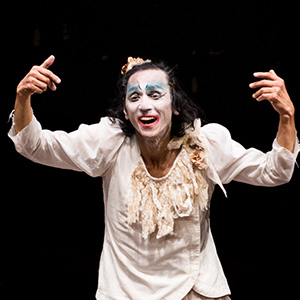
Takao Kawaguchi
Joined the performance group Dumb Type in 1996. Began a solo career in 2000, exploring the boundaries of performance across theatre, dance, video and art. In 2008 he began a solo performance series called a perfect life, which was presented at the 5th Yebisu International Festival for Art and Alternative Visions in 2013. In recent years, he has been working on performances that are related to Butoh, including The Sick Dancer (with Tomomi Tanabe, 2012) and About Kazuo Ohno (2013). The latter was nominated for an NYC Bessie Award, and was shown at Théâtre de la Ville in Paris in 2018.
http://www.kawaguchitakao.com/
Credits
A Body in Tokyo
Performance
Eiko Otake
Filming & Editing
NPO LAND FES
Cinematography
Dai Matsuoka
Photography
Tatsuhiko Nakagawa
English Subtitles
Mai Honda
Stage Management
Takashi Kawachi
Lighting Design & Projection
Noriyuki Mori (balance,inc.DESIGN)
Sound
Noriaki Coda
Set
Roshi (Sunagumi)
Producer
Toshio Mizohata
Organisers
Tokyo Metropolitan Government
Arts Council Tokyo (Tokyo Metropolitan Foundation for History and Culture)
Planning and Production
NPO Dance Archive Network
A Body in Fukushima
Photography
William Johnston
Editing
Eiko Otake
Music
David Harrington (Kronos Quartet)
Organisers
Tokyo Metropolitan Government
Arts Council Tokyo (Tokyo Metropolitan Foundation for History and Culture)
Planning and Production
NPO Dance Archive Network


